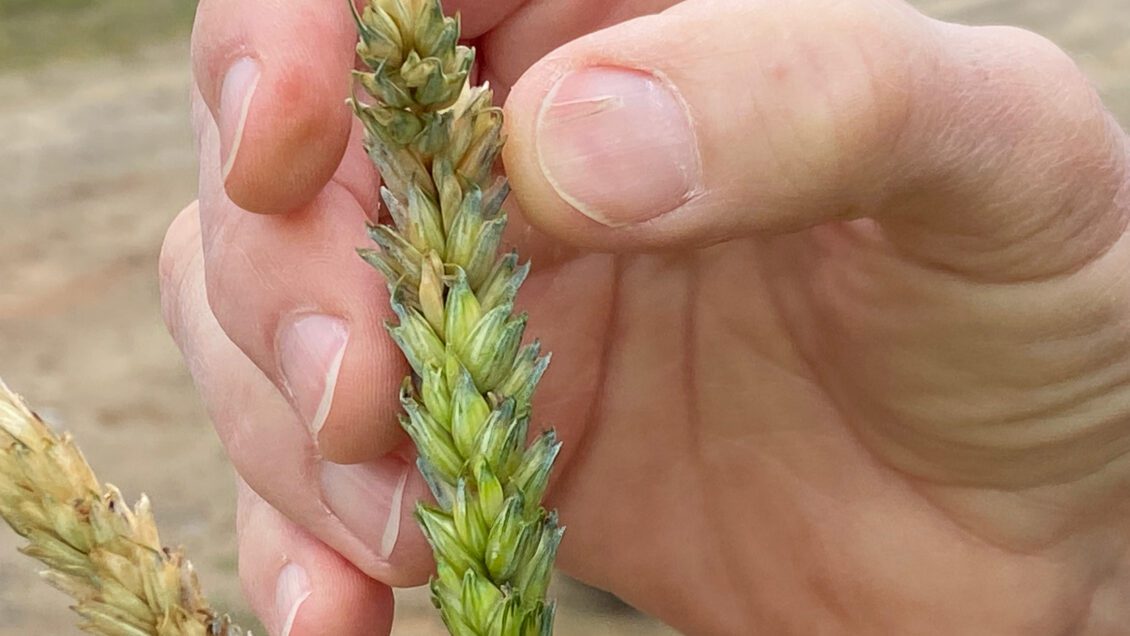
Clemson University researchers believe wheat and other small grains have a place in South Carolina and they are working to revive this part of the state’s agricultural industry.
An estimated 180,000 acres of winter wheat and other small grain crops including oat, rye and barley, are planted annually in South Carolina. The production value for wheat alone is more than $52 million per year. Clemson researchers believe the state’s farmers can profit by producing more wheat and other small grains.
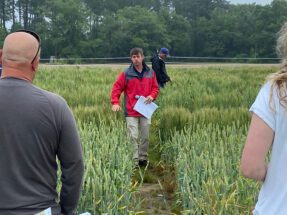
To help farmers learn more about growing these crops, researchers from Clemson and other Southeastern land-grant universities recently held a Small Grains Field Day at the Pee Dee Research and Education Center (REC) near Florence, South Carolina, where they provided research-based information on insect pests and diseases, as well as weed control, variety testing and best management practices.
Richard Boyles, an assistant professor of plant breeding and genomics and head of the Cereal Grains Breeding and Genetics Program at the Pee Dee REC, talked about work being done to revive the program, which was re-established in 2017. Boyles is annually evaluating thousands of wheat breeding lines that were developed at Clemson to determine which ones are best adapted to South Carolina and across the entire southeastern United States.
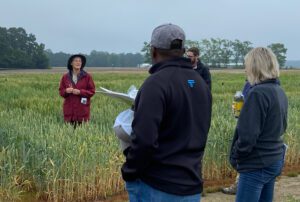
“We’re evaluating important traits such as grain yield, test weight and disease resistance,” Boyles said. “To become more efficient, we are using a combination of traditional and advanced plant breeding approaches to accelerate progress toward improving wheat productivity and resilience to various stresses.”
Powdery mildew, Fusarium head blight (scab) and rust are diseases being studied.
“These diseases are managed primarily with cultivar resistance and foliar fungicides,” said Christina Cowger, a United States Department of Agriculture research plant pathologist. “Farmers who are considering treating fields with fungicides, should scout the fields first to see if there is fungal disease. Applying fungicide in the absence of fungal disease pressure is unlikely to be profitable, whereas it is much easier to profit from a fungicide when disease is present.”
Scab is caused by a fungus that “wakes up” in the spring when the weather is rainy and relative humidity is high. Scab infections occur when small-grain plants are flowering. Growers can stay informed about scab risks, as well as register to get forecast alerts by visiting the U.S. Wheat and Barley Scab Initiative website at https://scabusa.org/.
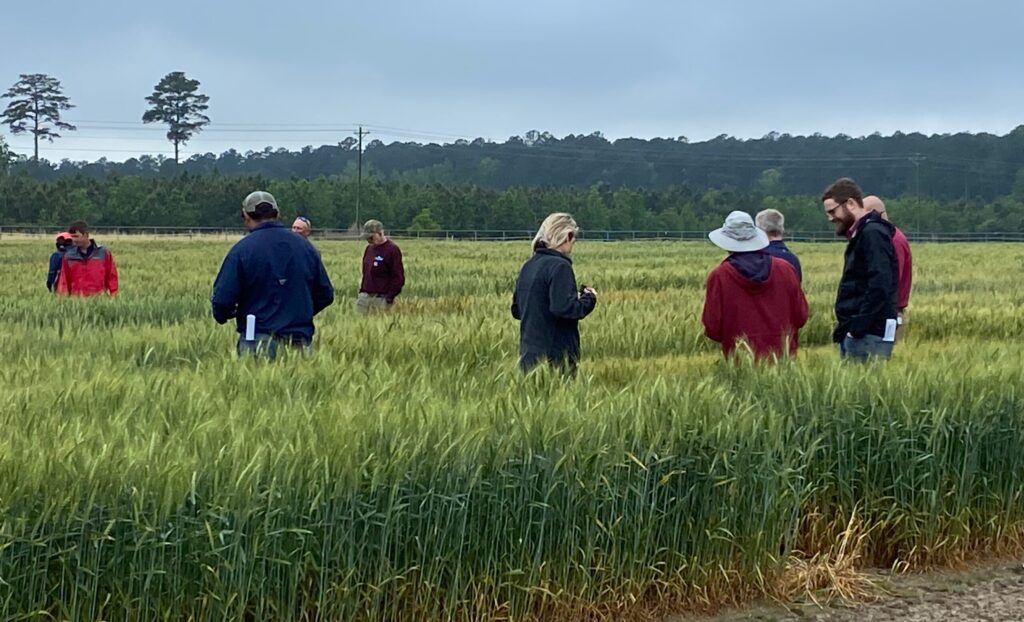
Managing weeds in small grains
As for weeds, Michael Marshall, Clemson Cooperative Extension Service weed scientist, discussed common weeds found in grain crops including: henbit, chickweed, wild radish, wild mustard, horseweed, cutleaf primrose, curly dock and wild garlic. Marshall also addressed annual ryegrass, or Italian ryegrass.
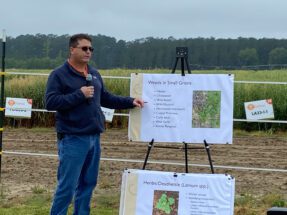
Italian ryegrass is a problematic weed in cereal crops and grass seed crops. It establishes quickly and grows rapidly. In some areas, it is planted as a cover crop and planted in many pasture settings as a quick food source for livestock and most wild ruminants.
“Italian ryegrass has become glyphosate-resistant,” Marshall said. “We’re seeing this resistance increase.”
The best control is achieved by using delayed pre-emergent or early post applications of residual products. Delayed pre-emergent sprays are applied after planting when 80% of wheat seed has germinated and shoots are at least ½ inch tall. Post-emergent residuals are applied when most of the wheat is at spiking until 2-leaf growth stage, depending on herbicide used.
To help prevent resistance and manage ryegrass populations, use herbicides with different modes of action on a rotational basis and implement alternative crop rotations.
Anyone with ryegrass questions can contact Marshall at marsha3@clemson.edu.
Managing insect pests in small grains
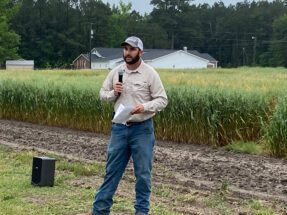
Insect pests also can be a problem. Alex Coleman, Clemson Extension small grains and sorghum specialist, talked about the Cereal Leaf Beetle, Hessian fly, Stink Bugs and Armyworms. Hessian flies prefer wheat, but they also can be found in triticale, barley and rye crops.
“Hessian flies are a threat to the South Carolina wheat crop,” Coleman said. “This insect can cause thin stands, dead tillers and late season lodging.”
Coleman said he expects to see an increase in Hessian fly populations. Following proper planting dates, variety selection and insecticide seed treatments can help with control.
Coleman also talked about small grain variety testing, selection and best management practices.
Other information field day participants received included a discussion on variety test plots planted by Mixon Seed.
For more information about the Clemson Cereal Grains Breeding and Genetics Program, go to https://bit.ly/3VjoBBh, or contact Richard Boyles at rboyles@clemson.edu.
-END-
Get in touch and we will connect you with the author or another expert.
Or email us at news@clemson.edu
